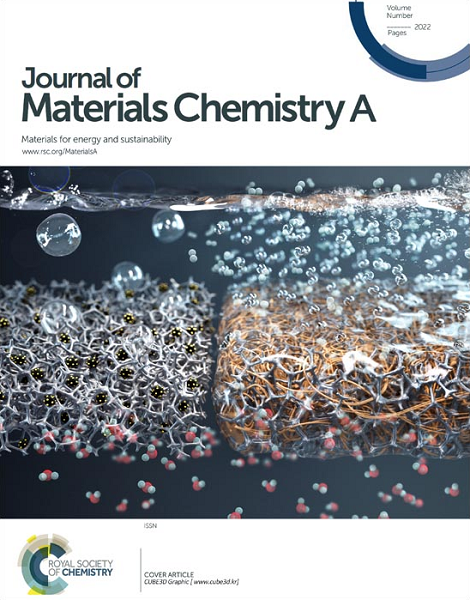Breaking the Symmetry of Sulfur Defect State via Atomic Substitution for Enhanced CO2 Photoreduction
IF 10.7
2区 材料科学
Q1 CHEMISTRY, PHYSICAL
引用次数: 0
Abstract
Conventional sulfur vacancy, characterized by a symmetric coordination of metal cations (M1-SV-M1), typically serves as a catalytic site for CO2 chemisorption. However, the symmetric SV site, with a uniform charge distribution across adjacent metal sites, enables sluggish electron transfer kinetics for CO2 activation and dissociation, as well as a low defect-band center that renders photoexcited electrons less energetic. Herein, we introduced Cu dopant into SV-rich SnS2 nanosheets (Cu-SnS2-SV) to construct the asymmetric Cu-SV-Sn sites, which effectively steer CO2 photoreduction into CO with a production rate of 48.6 μmol g-1 h-1 in the absence of photosensitizer and scavenger, 18-fold higher than SnS2-SV with symmetric Sn-SV-Sn sites. The experimental investigations combined with theoretical simulations reveal that asymmetric Cu-SV-Sn structure, compared with symmetric Sn-SV-Sn structure, allows an upshift of the defect-band center, which significantly mitigates the energy loss associated with the electron relaxation from conduction band to defect band. Moreover, the advantages of the Cu-SV-Sn sites over the Sn-SV-Sn sites are demonstrated not only by the increased Sn-S covalency, which facilitates electron transfer from catalysts to adsorbates, but also by the improved ability to stabilize the COOH* intermediates, which lowers the activation energy barrier of the rate-determining step.通过原子置换打破硫缺陷态的对称性以增强二氧化碳光还原作用
以金属阳离子对称配位(M1-SV-M1)为特征的传统硫空位通常用作二氧化碳化学吸附的催化位点。然而,对称 SV 位点在相邻金属位点上的电荷分布均匀,导致二氧化碳活化和解离的电子转移动力学缓慢,而且缺陷带中心较低,使得光激发电子的能量较低。在此,我们在富含 SV 的 SnS2 纳米片(Cu-SnS2-SV)中引入了铜掺杂剂,构建了不对称的 Cu-SV-Sn 位点,在没有光敏剂和清除剂的情况下,它能有效地引导 CO2 光还原成 CO,生成率达 48.6 μmol g-1 h-1,比具有对称 Sn-SV-Sn 位点的 SnS2-SV 高出 18 倍。实验研究与理论模拟相结合发现,与对称的 Sn-SV-Sn 结构相比,非对称的 Cu-SV-Sn 结构允许缺陷带中心上移,这大大减少了与电子从传导带弛豫到缺陷带相关的能量损失。此外,Cu-SV-Sn 位点相对于 Sn-SV-Sn 位点的优势不仅体现在 Sn-S 共价性的提高(这有利于电子从催化剂转移到吸附剂),还体现在稳定 COOH* 中间体的能力的提高(这降低了决定速率步骤的活化能垒)。
本文章由计算机程序翻译,如有差异,请以英文原文为准。
求助全文
约1分钟内获得全文
求助全文
来源期刊

Journal of Materials Chemistry A
CHEMISTRY, PHYSICAL-ENERGY & FUELS
CiteScore
19.50
自引率
5.00%
发文量
1892
审稿时长
1.5 months
期刊介绍:
The Journal of Materials Chemistry A, B & C covers a wide range of high-quality studies in the field of materials chemistry, with each section focusing on specific applications of the materials studied. Journal of Materials Chemistry A emphasizes applications in energy and sustainability, including topics such as artificial photosynthesis, batteries, and fuel cells. Journal of Materials Chemistry B focuses on applications in biology and medicine, while Journal of Materials Chemistry C covers applications in optical, magnetic, and electronic devices. Example topic areas within the scope of Journal of Materials Chemistry A include catalysis, green/sustainable materials, sensors, and water treatment, among others.
 求助内容:
求助内容: 应助结果提醒方式:
应助结果提醒方式:


